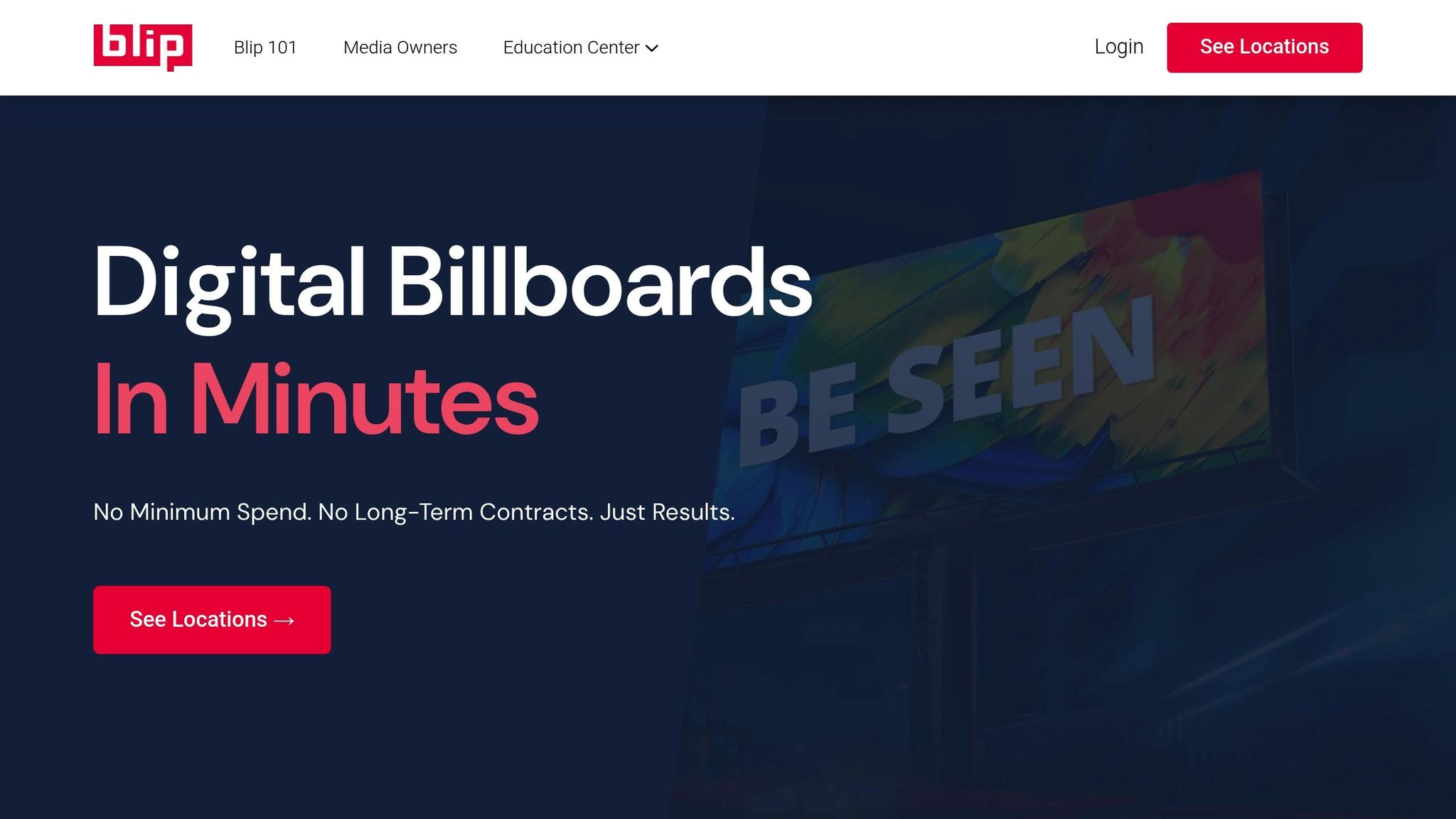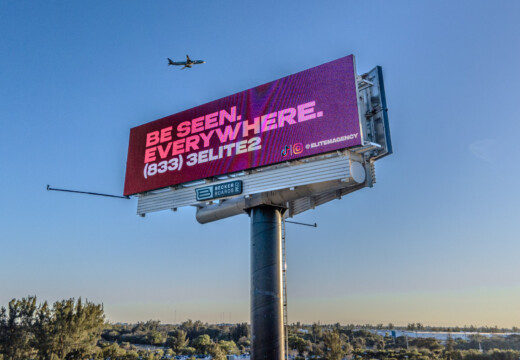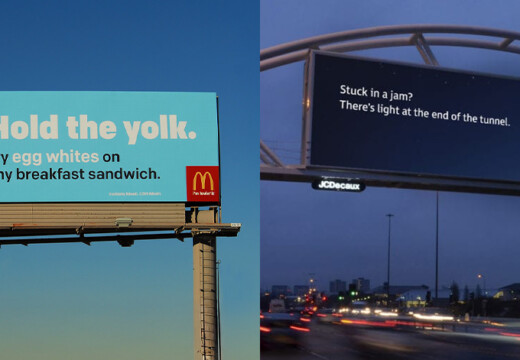Want your billboard to stand out and boost your brand? Here’s what you need to know:
- Big Impact: Billboards are bold, public, and visible. Use them to make a strong statement about your brand.
- Key Elements: Focus on logo placement, brand colors, and easy-to-read text to ensure your message is clear and memorable.
- Targeted Locations: Place your billboard in high-traffic areas where your audience is most likely to see it.
- Design for Your Audience: Match your visuals and message to the preferences and habits of your target audience.
- Data-Driven Adjustments: Use tools like Blip to track performance and improve your campaign in real time.
In short: A great billboard combines attention-grabbing design, strategic placement, and consistent branding. Keep it simple, clear, and aligned with your brand identity to make a lasting impression.
Key Elements of Billboard Brand Design
Aligning Design with Brand Goals
Your billboard design should echo your brand’s goals and messaging. Unlike digital ads or word-of-mouth marketing, billboards are bold, public statements. They demand attention and serve as a visual introduction to your brand’s mission.
As Chris Leslie, Founder of Leslie Lightcraft Co, puts it:
"It’s not a social media thing that you see on your phone. It’s not word-of-mouth. It’s big and bold and out there in public. I would say this is the first step of looking big and public"
To make this bold statement effective, it’s essential to incorporate the core visual elements that define your brand.
Core Brand Elements: Logo, Color, and Text
A successful billboard design leans on three fundamental elements:
- Logo Placement: Ensure your logo is prominently displayed and proportioned correctly. It should be instantly recognizable, even at a glance.
- Color Psychology: Use your brand’s colors strategically to create visual impact and reinforce brand identity.
- Typography: Choose fonts that are legible from various distances and even at high speeds. Clear, bold text ensures your message lands effectively.
Ray Bowens, Founder of Hashtag-Vape, highlights the value of billboards in creating impact:
"Billboards are one of the most impactful ways to advertise, and with Blip, you spend a fraction of what you would end up paying elsewhere"
Each of these elements should work together to make your brand instantly recognizable and memorable.
Matching Designs to Your Audience
Your billboard design must resonate with your target audience. To do this, you need to understand their preferences, habits, and the context in which they’ll encounter your ad. A well-targeted design combines compelling visuals with clear, relevant messaging.
Kimberly Pinkson, Owner of Pretty In Pinkston, underscores the importance of standing out:
"Blip works for us. It’s a different medium, and it brings a lot of exposure. It sets us apart from the rest of the [competition], and that’s what I like"
Here are three audience-focused considerations to keep in mind:
- Visual Context: Make sure your design stands out in the environment where it will appear.
- Message Relevance: Craft a message that speaks directly to your audience’s interests and needs.
- Local Considerations: Tailor your design to align with local tastes and cultural nuances.
The essence of effective billboard branding lies in balancing eye-catching visuals with a clear, authentic representation of your brand. Every design decision, from logo placement to typography, should strengthen your brand’s presence while fostering a connection with your audience.
How to Design a Billboard
Billboard Design Standards and Rules
To make your billboard stand out and deliver your message effectively, it’s essential to follow some key design principles. These standards are built around the idea of grabbing attention quickly and making your brand message easy to understand. By focusing on clarity and thoughtful execution, you can ensure your billboard leaves a lasting impression.
Using Colors for Maximum Impact
Choose bold, high-contrast color combinations that align with your brand’s primary palette. This not only reinforces your brand identity but also ensures your message is easy to read, even from a distance.
Text Size and Spacing Requirements
Stick to large, clean fonts with plenty of spacing. The goal is to make your message instantly readable. Keep your text short and to the point – viewers only have a few seconds to take it all in.
sbb-itb-2e2e93f
Planning Your Billboard Campaign
Creating a successful billboard campaign requires thoughtful planning to ensure your message connects with the right audience at the right time. By carefully selecting locations, managing your budget wisely, and factoring in outdoor conditions, you can make the most of your advertising efforts.
Picking the Best Locations
The location of your billboard can make or break your campaign. High-traffic spots that match your audience’s travel patterns are key to increasing visibility. With tools like Blip’s interactive marketplace, you can assess locations using metrics like daily impressions and average CPM rates. Keep in mind factors such as traffic flow, the demographics of nearby areas, and how competitive the space is. Digital billboards also offer flexibility, allowing you to adjust placements and bidding strategies to get the best results.
Setting Up a Budget-Friendly Campaign
Digital billboards are a smart choice if you’re looking for flexibility without overspending. Start with a small daily budget and adjust as you see results. Features like real-time bidding, which happens every 10 minutes, help you secure competitive rates while keeping your brand consistently visible.
Factoring in Weather and Lighting
Outdoor conditions like lighting and weather can impact how well your billboard is seen. To ensure your message stands out, schedule your ads during daylight hours or other times when visibility is at its best. These small adjustments can make a big difference in how effective your campaign is.
Tracking and Improving Billboard Results
Measuring Brand Impact
To gauge how your billboard is influencing your brand, keep an eye on key metrics like website traffic, direct visits, brand search trends, social media mentions, and customer feedback. Here are some specific areas to monitor:
- Brand search volume trends: See if more people are actively searching for your brand.
- Social media mentions: Track how often your brand is being talked about online.
- Direct website visits: Measure whether people are heading straight to your site after seeing the billboard.
- Customer survey feedback: Gather insights on brand awareness directly from your audience.
Testing Different Design Options
Experimenting with your billboard’s design can reveal what resonates most with your audience. A design rotation strategy works well here – create multiple variations and test one element at a time. Consider tweaking:
- Logo placement and size: Does a larger logo make your brand more memorable?
- Color combinations: Which colors grab attention and align with your message?
- Message length: Are shorter messages more effective at conveying your point?
- Call-to-action placement: Does its position impact how people respond?
Track the performance of each variation to understand what works best. Then, use these insights to fine-tune your billboard’s look and feel. Blip’s performance data can help you make these adjustments with precision.
Using Blip‘s Performance Data

Blip’s analytics dashboard provides detailed metrics to help refine your campaign strategy. By diving into this data, you can uncover actionable insights. Here’s what to focus on:
| Metric Type | What to Track | Why It Matters |
|---|---|---|
| Impression Data | Daily views | Pinpoint the times your billboard gets the most visibility. |
| Location Performance | Traffic patterns | Determine which locations drive the most engagement. |
| Cost Analysis | CPM rates | Ensure your budget is being spent effectively. |
Ray Bowens, Founder of Hashtag-Vape, shares his perspective:
"Billboards are one of the most impactful ways to advertise, and with Blip, you spend a fraction of what you would end up paying elsewhere".
Blip’s real-time bidding system, which updates every 10 minutes, allows you to make on-the-spot adjustments. Here’s how you can use these insights:
- Optimize Display Times: Schedule your ads during peak engagement hours.
- Refine Targeting: Focus your budget on locations where your billboard drives the strongest response.
- Adjust Budgets: Allocate more funds to designs and placements that are performing well.
Conclusion: Making Billboards Work for Your Brand
Billboard advertising can establish a strong brand presence when approached with the right mix of strategy, design, and data analysis. To recap, successful billboard campaigns rely on three essential elements:
Strategic Visibility
Pick locations with heavy foot or vehicle traffic that overlap with your target audience’s routines. This ensures your message reaches the right people at the right time. As Paul Willey, Owner of Mr. Charlie’s Chicken Fingers, puts it:
"Working with Blip has given Mr. Charlie’s the momentum to get our new location on the map while accelerating growth for our original location".
Effective Design
Craft billboard designs that communicate your brand’s message clearly and quickly. Use a blend of bold visuals, easy-to-read text, and strategic color choices to make your billboard unmissable while staying true to your brand identity.
Performance Monitoring
Use real-time data insights to tweak and improve your campaign. Keep an eye on metrics like impressions and engagement to ensure your billboard consistently reaches and resonates with your target audience.
FAQs
How do I choose the best billboard location to effectively reach my target audience?
To choose the best spot for your billboard, think about where your target audience is most likely to notice it. Blip makes this easier by offering tools to analyze important metrics like impressions and CPM through their interactive marketplace. This lets you make informed choices and position your ad in high-traffic areas that match your campaign objectives.
How can I create a billboard design that reflects my brand identity while grabbing attention?
When designing a billboard that truly reflects your brand and grabs attention, focus on these core strategies:
- Keep it simple and bold: Use short, clear messages paired with eye-catching visuals that align with your brand’s personality. Avoid overcrowding the space, so your message is instantly clear.
- Stick to brand colors and fonts: Incorporate your brand’s color scheme and typography to ensure the design feels cohesive with your other marketing materials. This consistency helps strengthen brand recognition.
- Showcase your logo: Place your logo in a prominent spot without letting it dominate the design. This ensures viewers can quickly connect the ad to your brand.
Since billboards are often seen briefly – sometimes by drivers – focus on making the design easy to read and visually striking for a lasting impression.
How can I track the success of my billboard campaign and improve it over time?
Blip offers in-depth analytics to help you understand how your campaign is performing. You can monitor essential metrics like impressions, costs, and engagement, providing a clear picture of your ad’s effectiveness.
Armed with this information, you can make smart, informed tweaks to your campaign. Whether it’s fine-tuning your targeting, reallocating your budget, or experimenting with fresh designs, Blip’s user-friendly tools simplify the process. This makes it easier to refine your approach and achieve better results as your campaign evolves.
Related posts
- 5 Common Billboard Design Mistakes to Avoid
- How to Choose Graphics for Digital Billboards
- Checklist for Quick-Read Billboard Designs
To choose the best spot for your billboard, think about where your target audience is most likely to notice it. Blip makes this easier by offering tools to analyze important metrics like impressions and CPM through their interactive marketplace. This lets you make informed choices and position your ad in high-traffic areas that match your campaign objectives.
"}},{"@type":"Question","name":"How can I create a billboard design that reflects my brand identity while grabbing attention?","acceptedAnswer":{"@type":"Answer","text":"
When designing a billboard that truly reflects your brand and grabs attention, focus on these core strategies:
\n
- \n
- Keep it simple and bold: Use short, clear messages paired with eye-catching visuals that align with your brand's personality. Avoid overcrowding the space, so your message is instantly clear.
- Stick to brand colors and fonts: Incorporate your brand’s color scheme and typography to ensure the design feels cohesive with your other marketing materials. This consistency helps strengthen brand recognition.
- Showcase your logo: Place your logo in a prominent spot without letting it dominate the design. This ensures viewers can quickly connect the ad to your brand.
\n
\n
\n
\n
Since billboards are often seen briefly - sometimes by drivers - focus on making the design easy to read and visually striking for a lasting impression.
"}},{"@type":"Question","name":"How can I track the success of my billboard campaign and improve it over time?","acceptedAnswer":{"@type":"Answer","text":"
Blip offers in-depth analytics to help you understand how your campaign is performing. You can monitor essential metrics like impressions, costs, and engagement, providing a clear picture of your ad's effectiveness.
\n
Armed with this information, you can make smart, informed tweaks to your campaign. Whether it's fine-tuning your targeting, reallocating your budget, or experimenting with fresh designs, Blip’s user-friendly tools simplify the process. This makes it easier to refine your approach and achieve better results as your campaign evolves.
"}}]}


